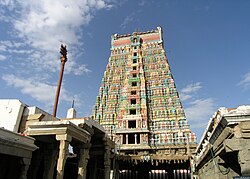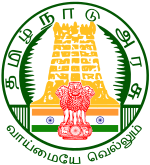Tamil nadu Tourism place
Map
1 Vellore Fort
Vellore Fort is a large 16th-century fort situated in heart of the Vellore city, in the state of Tamil Nadu, India built by Vijayanagara Kings. The Fort was at one
point of time the headquarters of the Aravidu Dynasty of Vijayanagara
Empire. The fort is known for its grand ramparts, wide moat and robust
masonry.
The Fort's ownership passed from Vijayanagara Kings, to the Bijapur Sultans, to Marathas, to the Carnatic Nawabs and finally to the British, who held the fort until India gained independence. The Indian government maintains the Fort with the Archaeological Department. During British rule, the Tipu Sultan's family and the last king of Sri Lanka, Sri Vikrama Rajasinha were held in as prisoners in the fort. The fort houses the Jalakanteswarar Hindu temple, Christian St. John's Church and a Muslim mosque, of which the Jalakanteswarar Temple is famous for its magnificent carvings. The first rebellion against British rule erupted at this fort in 1806, and it is also a witness to the massacre of the Vijayanagara royal family of Sriranga Raya.
Kanyakumari


The Fort's ownership passed from Vijayanagara Kings, to the Bijapur Sultans, to Marathas, to the Carnatic Nawabs and finally to the British, who held the fort until India gained independence. The Indian government maintains the Fort with the Archaeological Department. During British rule, the Tipu Sultan's family and the last king of Sri Lanka, Sri Vikrama Rajasinha were held in as prisoners in the fort. The fort houses the Jalakanteswarar Hindu temple, Christian St. John's Church and a Muslim mosque, of which the Jalakanteswarar Temple is famous for its magnificent carvings. The first rebellion against British rule erupted at this fort in 1806, and it is also a witness to the massacre of the Vijayanagara royal family of Sriranga Raya.
Kanyakumari

Kanyakumari headlandKanyakumari (Tamil: கன்னியாகுமரி); also
known as Kanniyakumari pronunciation , formerly known as Cape
Comorin, is a town in Kanyakumari District in the state of Tamil Nadu in India. The name
comes from the temple, Devi Kanya Kumari Temple in the region. It is
the southernmost tip of peninsular India. Kanya kumari town is the
southern tip of the Cardamom Hills, an extension of the Western Ghats range. The
nearest town is Nagercoil, the
administrative headquarters of Kanyakumari District, 22 km (14 mi) away.
Kanyakumari was a town since Sangam period and is a
popular tourist destination.
















